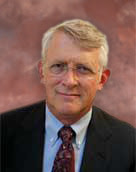Sol Lewitt, one of conceptualism's pioneers, provided a classic definition: "In conceptual art, the idea or concept is the most important aspect of the work. When an artist uses a conceptual form of art...all of the planning and decisions are made beforehand and...the idea becomes a machine that makes the art." It is self-executing art, which in painting means that the fundamental creative activity occurs before the artist starts putting pigment on canvas.
Early conceptual artists rejected traditions of painting and galleries. For example, many created wall-mounted works from words, rather than visual images, and others used unconventional materials to actualize new ideas and explore different ways of seeing the world around them (e.g., happenings, installations, earth sculpture). Conceptual art took root in the late 1960s, when I was a student at Colorado College, a great little liberal arts school that brought many of the movement's leaders to campus. I was so busy with studies in basic and social sciences that I never had time to try the creative techniques that the visiting artists discussed in lectures and shows I attended.
My artistic interests lay dormant for many years until my Kellogg Fellowship mentor, Ben Barker, inspired me to do something innovative with the opportunity provided by the program. With his support, I abandoned my original fellowship project -- a study of urban medical centers' impact on rural health -- and began learning to paint. The other fellows presented papers on their academic research projects at the end of our three-year program, but I displayed a dozen paintings and explained how immersion in art had opened my mind to creative thinking. The experience profoundly changed my approach to the future of health care...and life. Thank you, Dr. Barker!
In the process of becoming a conceptual artist over the past three decades, I have learned that a pre-determined process can lead to unexpected discovery and improvement. I have also learned how artists see the world as a realm of possibilities that can be organized in many different, aesthetically defensible ways. Now, in the process of returning to self-employment, I am trying to apply this same artistic inspiration to my work as a health futurist and medical economist -- while preparing 30 paintings for a gallery show this spring. Our existing health care system is not a pretty picture, so why not approach health reform with the creative vision of a conceptual artist? What would good health look care look like, and how can we create it?

